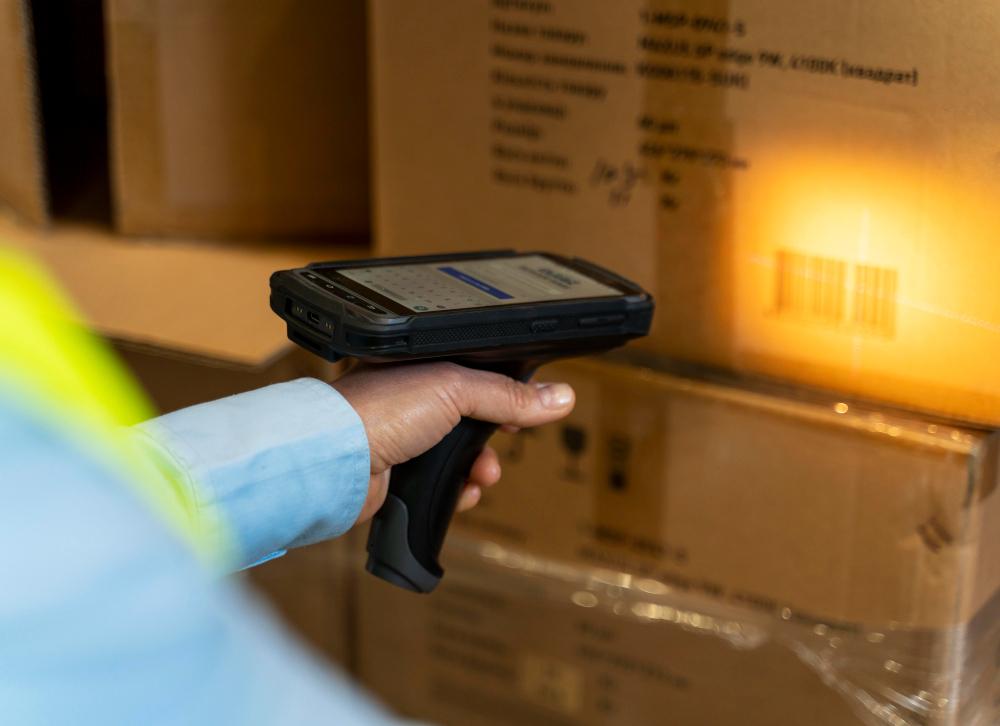
The Essential Guide to Smart Warehousing: Navigating Modern Logistics
Dec 17, 2023
Discover the transformative power of smart warehousing in navigating modern logistics. Dive into the four pillars – sensors, automation, AI, and sustainability – that redefine warehouse operations. Uncover the benefits, from operational efficiency to enhanced supply chain visibility, and explore how this strategic investment can elevate your business in today's competitive marketplace.
The modern business landscape is a tempestuous sea. Gone are the days of smooth sailing – today's currents demand constant agility and innovation. In this churning ocean of commerce, smart warehousing emerges as the lifejacket you need to stay afloat. It's not just a trendy buoy; it's a complete overhaul of traditional logistics, a metamorphosis that transforms your warehouse into a powerful engine of efficiency.
Unveiling the Secrets: What Lies Beneath the Surface of Smart Warehousing
Forget the dusty image of paper records and manual labor. Smart warehousing is a vibrant ecosystem teeming with technological life. Imagine sensors whispering real-time data, robots gliding like graceful dancers, and AI brains orchestrating every movement with the precision of a master conductor. This isn't a futuristic mirage; it's the reality smart warehousing unlocks, ready to revolutionize your logistics game.

Diving Deeper: The Pillars of Smart Warehouse Success
But what are the building blocks of this intelligent behemoth? Let's dive deeper and explore the four pillars that hold up the magnificent temple of smart warehousing:
1. The All-Seeing Eye: Sensors and IoT Integration
Picture your walls pulsating with data, your equipment whispering vital signs, and every corner alive with intelligence. Sensors become your omnipresent eyes and ears, monitoring inventory levels, equipment health, and environmental conditions in real-time. This constant, omniscient data stream empowers you to make data-driven decisions, banish inefficiencies, and ensure your warehouse operates at peak performance.
Unveiling the Potential of Sensors and IoT Integration in detail
· Inventory Intelligence: Deploy RFID tags, weight sensors, and camera-based tracking for real-time stock levels and location data.
· Predictive Maintenance: Leverage vibration sensors and acoustic monitoring to forecast equipment failures and schedule proactive maintenance.
· Environmental Optimization: Monitor temperature, humidity, and air quality with dedicated sensors to ensure optimal storage conditions and employee comfort.
· Data-Driven Insights: Aggregate sensor data from across your warehouse to identify inefficiencies, optimize workflows, and make informed decisions.
2. The Automated Orchestra: Robots and Automation Take the Stage
Reimagine repetitive tasks like picking and packing as a mesmerizing ballet performed by tireless robots. These tireless partners handle high-volume, error-prone tasks with superhuman precision and speed, freeing your human team for higher-level strategic thinking. Picture orders whizzing through the air on conveyor belts, flawlessly curated and dispatched in record time.
Let’s identifying the potential of Robots and Automation in detail:
· Automated Picking and Packing: Implement robotic arms and conveyor systems for high-volume, repetitive tasks, minimizing human error and boosting speed.
· Autonomous Mobile Robots (AMRs): Utilize self-driving robots for transporting materials, pallets, and finished goods, optimizing internal logistics.
· Automated Sorting and Classification: Employ robotic arms and vision systems for sorting items by size, type, or destination, streamlining fulfillment processes.
· Collaborative Robots (Cobots): Integrate safe, human-friendly robots alongside workers for tasks requiring dexterity and collaboration.
Read More: Importance of Smart Containerization in the Logistics Industry
3. The Data Whisperer: AI and Machine Learning Take the Helm
Imagine a digital braintrust constantly analysing your warehouse data, predicting demand with uncanny accuracy, and suggesting workflow improvements you never thought possible. AI algorithms become your secret weapon, optimizing everything from inventory levels to delivery routes, ensuring your warehouse operates like a finely tuned machine.
Here are some of the ways to empowering your warehouse with AI and Machine Learning:
· Demand Forecasting: Analyze historical data and market trends to predict future demand, optimizing inventory levels and avoiding stockouts.
· Dynamic Route Optimization: Leverage AI-powered algorithms to plan and adjust delivery routes in real-time, considering traffic, weather, and driver availability.
· Warehouse Layout Optimization: Use data analytics to redesign your warehouse layout for optimal flow of goods, minimizing travel distances and bottlenecks.
· Labor Scheduling: Predict staffing needs based on workload forecasts, ensuring efficient workforce allocation and resource utilization.

4. The Green Guardian: Sustainability Woven into the Fabric
Smart warehousing isn't just about efficiency; it's about responsibility. Energy-efficient lighting illuminates your aisles, while innovative solutions like solar power and waste-reduction strategies minimize your carbon footprint. This commitment to sustainability not only benefits the planet but also resonates with customers and boosts your brand image.
Weaving Sustainability into your Operations:
· Energy-Efficient Lighting: Upgrade to LED lighting and smart control systems to minimize energy consumption and carbon footprint.
· Renewable Energy Solutions: Explore solar power, wind power, or fuel cell technologies to generate on-site renewable energy.
· Waste Reduction Strategies: Implement recycling and reuse programs for packaging materials, minimizing waste generation and disposal costs.
· Sustainable Transportation: Choose fuel-efficient vehicles, optimize delivery routes, and explore alternative fuel options like electric trucks.
Recommended Reading: 7 Crucial Benefits of Multiple Warehousing: Become A Local Competitor to Expand Your Business
Reaping the Rewards: The Treasure Trove of Smart Warehousing
Smart warehousing isn't just a tech upgrade; it's a strategic investment for your business. Here are some key advantages:
1. Boosting Operational Efficiency
· Automated systems cut order processing times by up to 80%, ensuring faster and error-free tasks.
· AI-powered algorithms optimize delivery routes, reducing delivery times and fuel costs.
· Robots handling repetitive tasks decrease labor costs, freeing up human resources for higher-value tasks.
· Smart storage solutions maximize warehouse space, enhancing storage capacity and workflows.
2. Optimized Inventory Management
· Real-time tracking and predictive forecasting prevent stockouts and losses, ensuring timely availability of products.
· Automated inventory tracking replaces manual counts, saving time and reducing errors.
· Accurate demand prediction minimizes overstocking, optimizing inventory levels and cost-efficiency.
3. Swift Order Processing
· Streamlined processes enable faster order processing, offering same-day and hyper-local delivery options.
· Reduced cart abandonment and increased customer loyalty due to rapid delivery and reliable service.
4. Operational Cost Reduction
· Automation reduces labor costs and optimizes resource utilization, enabling investments in growth or team incentives.
· Energy-efficient systems lower bills while contributing to sustainability efforts.
· Automated sorting and recycling systems minimize waste disposal costs and enhance resource management.
· Real-time data insights aid in informed decision-making for cost-saving opportunities.
5. Enhanced Supply Chain Visibility
· Real-time tracking ensures complete supply chain visibility, identifying potential issues before they impact delivery.
· Improved collaboration with partners and proactive responsiveness to disruptions bolster relationships.
· Proactive communication and adjustments to delivery schedules build customer trust and reliability.
Relevant Reading: 7 Key Considerations When Choosing a Warehouse Location for Your 3PL Business
Remember, smart warehousing isn't just about technology; it's about a mindset. It's about embracing innovation, optimizing every process, and constantly seeking to improve. With the right approach and the right logistics partner, you can make difference. Get in touch with us today to redefine your logistics.